Weather and climate information with colorful graphs showing the average temperatures, precipitation, sunlight duration, number of hot and cold days, snowfall stats and much more for top 30 tourist destinations in Slovenia. Plan your trips to Slovenia to avoid bad weather conditions as much as possible.
– Ljubljana Weather and Climate
A good time to visit Ljubljana is anytime, although most favour the spring, summer and autumn climate. However, don’t overlook the Christmas and New Year’s celebrations, which brighten up even the harshest of winter weather in Ljubljana.
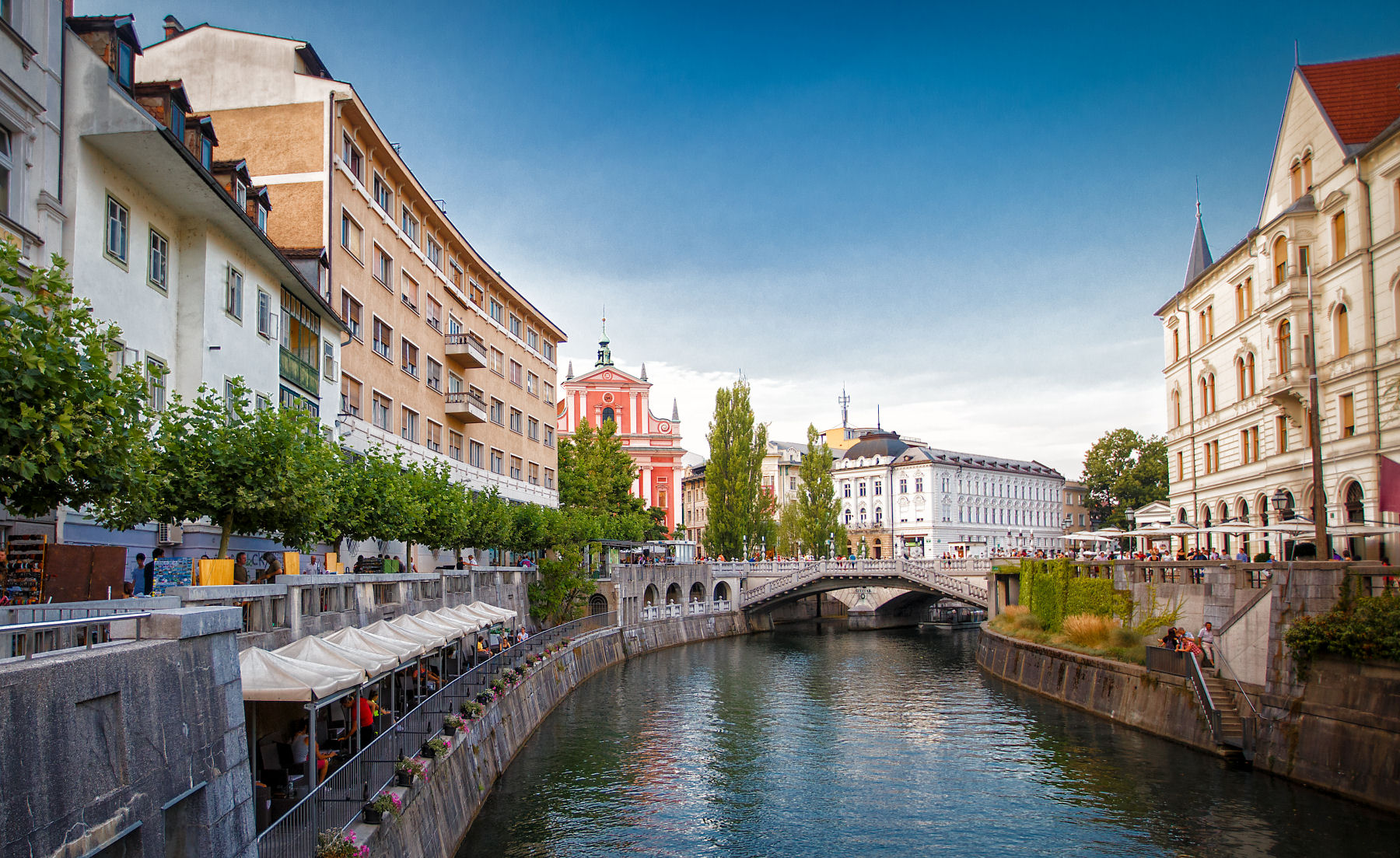
The climate in Ljubljana is temperate, with high temperatures and sunny days in the summer and colder, damper weather in the winter. Image by Gilad Rom / CC BY 2.0
– Maribor Weather and Climate
The Maribor climate is strongly influenced by the city’s location. Standing on the south-eastern side of the Alps and experiencing warm weather the year round, visitors to Maribor can expect warm summers that are not overly hot. This season is soon followed by cooler autumn and winter weather, which is rarely harsh to extremes.

The summer climate is always a popular time to visit Maribor, and even the evening temperatures are favourable, enticing people to sit on the terraces, outside of central bars and restaurants. Image by János Korom Dr. / CC BY-SA 2.0
– Bled Weather and Climate
Lake Bled enjoys pleasant, sunny summers when days are long and temperatures can often exceed 25°C, particularly in July and August. Lake Bled has the longest swimming season of any alpine lake in Europe (from June to late September). Winter weather in Bled, by contrast, is bitterly cold, with snow and frosty days when temperatures hover at or just below freezing.

Lake Bled has the longest swimming season of any alpine lake in Europe (from June to late September). Image by Derbeth / CC BY 2.0
– Piran Weather and Climate
Resting on the Adriatic Sea, Piran comes with a typically-pleasant Mediterranean climate, which means hot, dry summers and mild winters. Daytime summer temperatures hover around the upper 20s (°C), while winters rarely see dips below 0°C during the day.
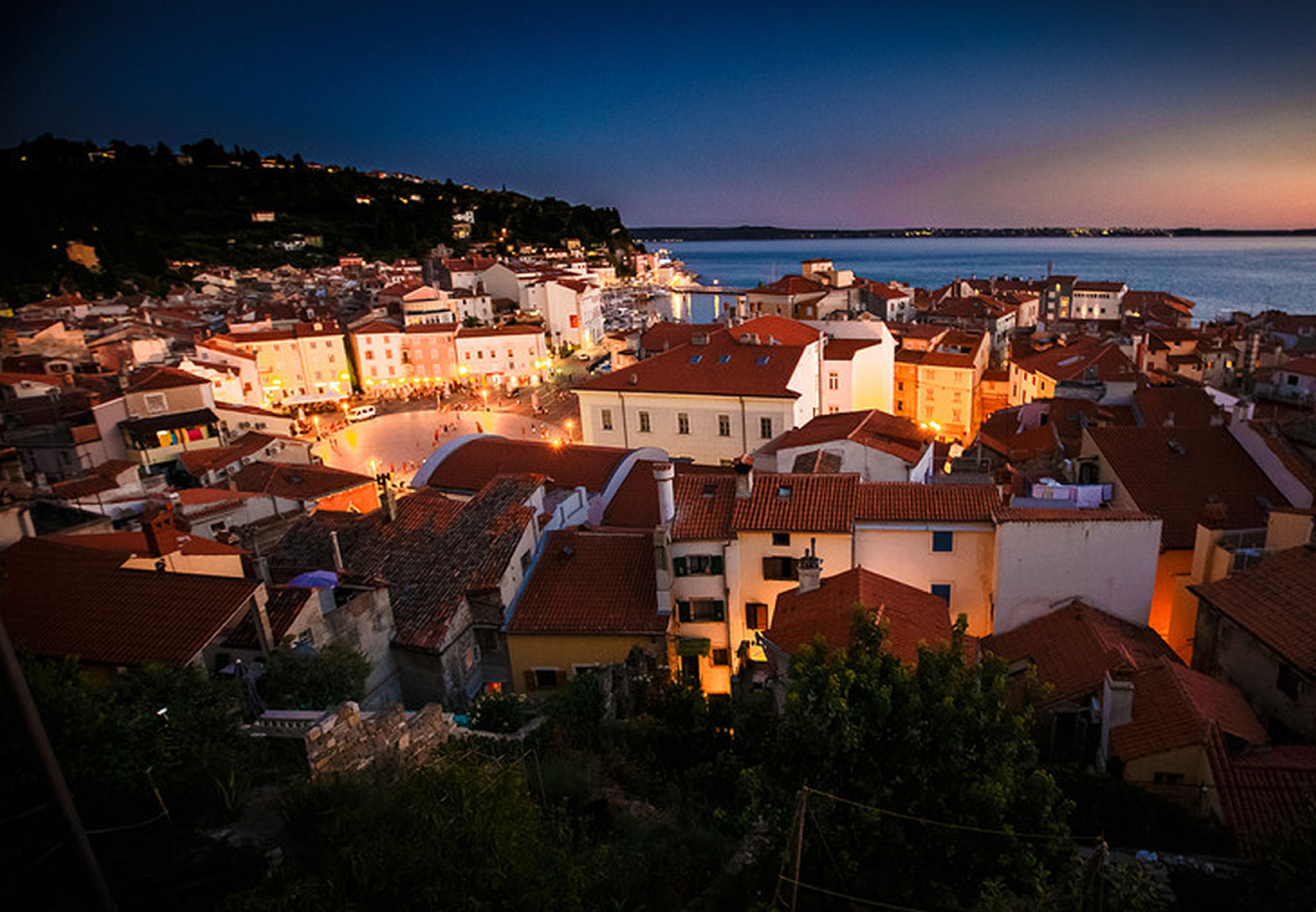
Evening and night summer temperatures in Piran are usually pleasant enough to be able to sit on the terraces and eat outside. Image by Gilad Rom / CC BY 2.0
– Portoroz Weather and Climate
Portoroz lies on the Slovenian Coast and enjoys a climate that is quite different from other parts of Slovenia. Visitors can expect Mediterranean-style weather in the summer, with plenty of sunshine and high temperatures, as well as mild winters.
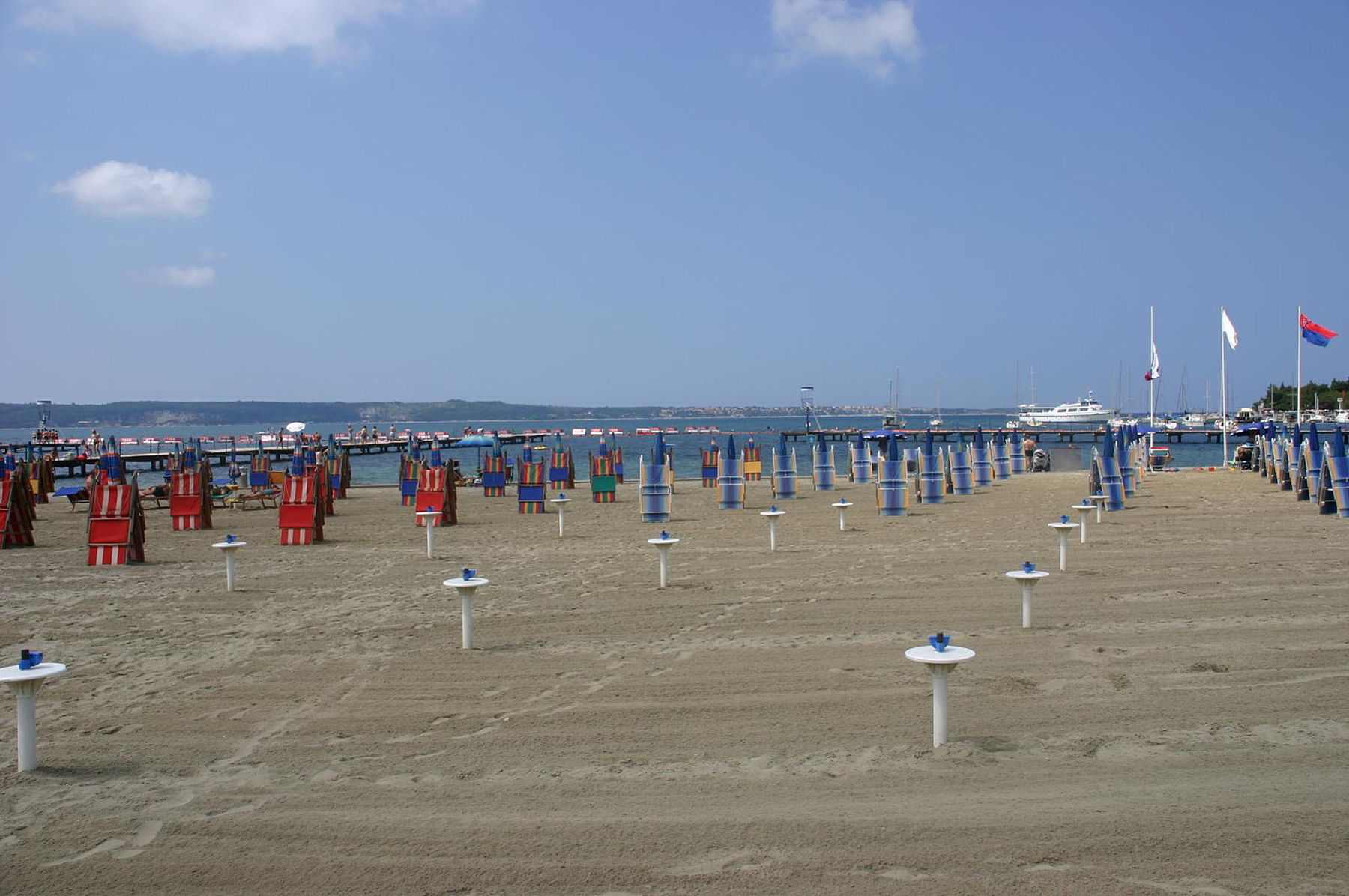
Summers in Portoroz are hot and mostly sunny, with average daytime temperatures between 23°C and 30°C, but sometimes quite higher, 35°C or more. Image by Wolfgang / CC BY-ND 2.0
– Kranjska Gora Weather and Climate
The ski resort of Kranjska Gora experiences some very distinctive weather, with seasonal climate changes being strongly influenced by it situation within the Gorenjska region and the Slovenian Alps. Kranjska Gora has grown to become one of Slovenia’s leading winter resorts, and so during the winter months, you can expect plenty of snow and a rather chilly climate. However, the summer climate is quite different and whilst it could never really be described as hot, it is certainly warm and very pleasant.

Kranjska Gora enjoys short but sunny summers when days are long and temperatures can often exceed 25°C, particularly in July and August. Image by Tiia Monto / CC BY-SA 3.0
– Izola Weather and Climate
Izola is an old fishing town located on the Slovenian Adriatic coast. For many, the spring and autumn climate offers the best time of the year to visit Izola, since the height of the summer weather can be a little too hot for some. July and August always tend to be the hottest months in Izola, when temperatures have been known to soar up to 30°C and more.
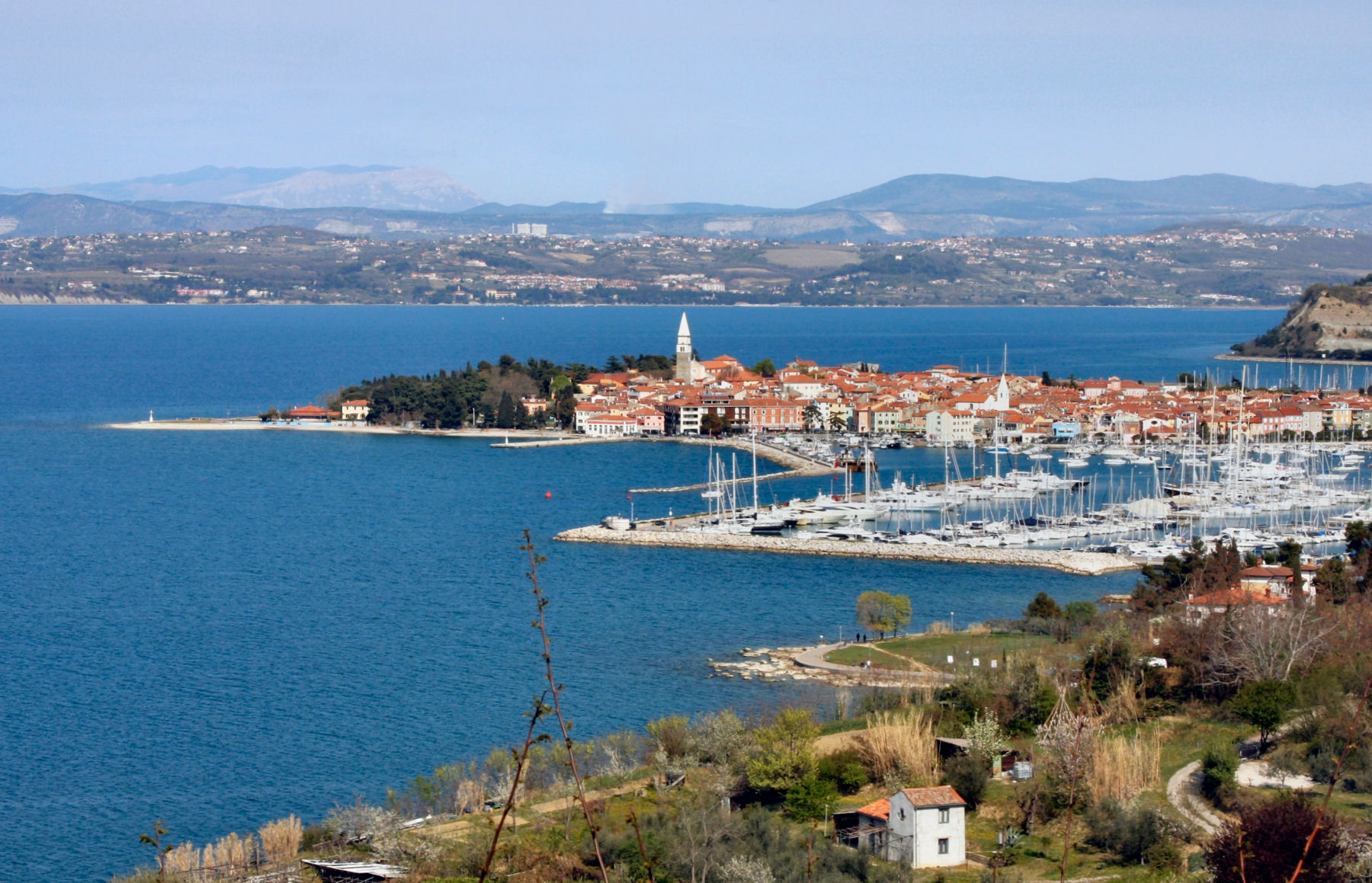
Summers in Izola are hot and generally sunny, with average daytime temperatures between 23°C and 30°C, but sometimes quite higher, 35°C or more. Image by Bryan Pocius / CC BY 2.0
– Koper Weather and Climate
Koper is the biggest town on the Slovenian coast and the climate here is more Mediterranean from other parts of Slovenia. Summer temperatures rarely exceed 30°C and winter temperatures seldom drop below freezing. The cold Bora winds blow during the winter months and the south wind called Jugo brings clouds and rain, but there is plenty of sunshine at this time.
– Novo Mesto Weather and Climate
With a typically Slovenian climate, temperatures in Novo Mesto are usually fairly pleasant, regardless of the time of year. However, the summer weather in Novo Mesto is the most appealing and inviting, and sees a noticeable climb in visitor numbers. You can expect to experience some rainy weather at times, although this is usually light and quite intermittent. Winter is the driest time, with only a few days of snow or rain expected between December and March.
– Lipica Weather and Climate
Located in southwest Slovenia, Lipica is famous for its stud farm breeding white Lipizzaner horses. Visitors to Lipica can expect Mediterranean-style weather in the summer, with plenty of sunshine and temperatures that rarely feel uncomfortably hot, as well as mild winters. In the late spring and early autumn, temperatures in Lipica are at their most pleasant.

Lipica has the typical spring, summer, autumn, and winter climate variations. It’s pretty hot in the summer and quite pleasant in late spring and early autumn. Image by Gorupka / CC BY 2.0
– Podcetrtek Weather and Climate
Podcetrtek’s weather is typically Slovenian, with a temperate climate. The winters in Podcetrtek are cold and damp at times, while the summers are warm to hot, with extremely balmy evenings.
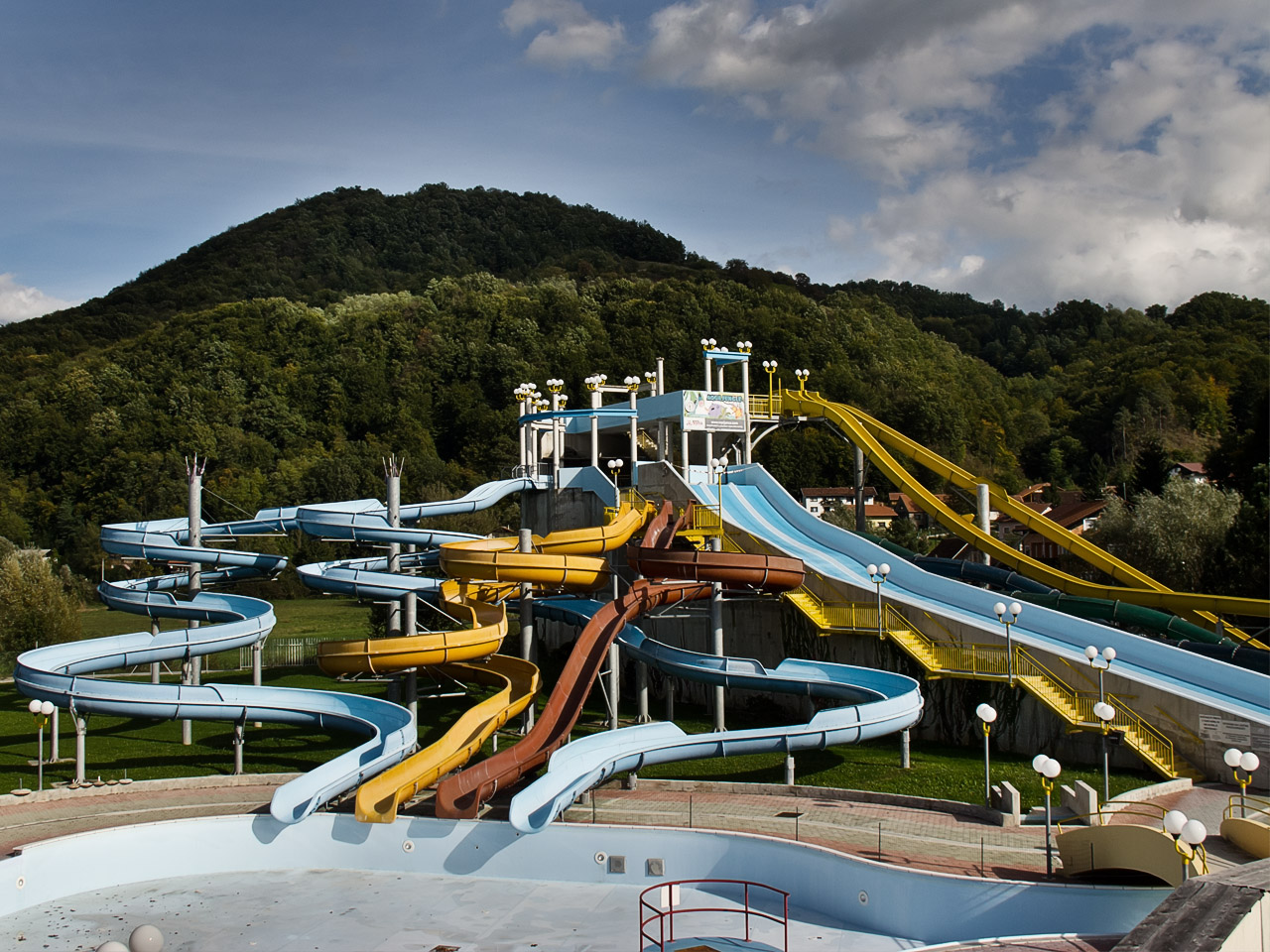
The peak tourist season in Podcetrtek is always the summer. Image by Dejan Danailov / CC BY-NC-ND 2.0
– Lake Bohinj Weather and Climate
With reasonably warm summer weather and pretty chilly winters, Bohinj is at its most appealing between the months of May and September, when high temperatures are most likely.
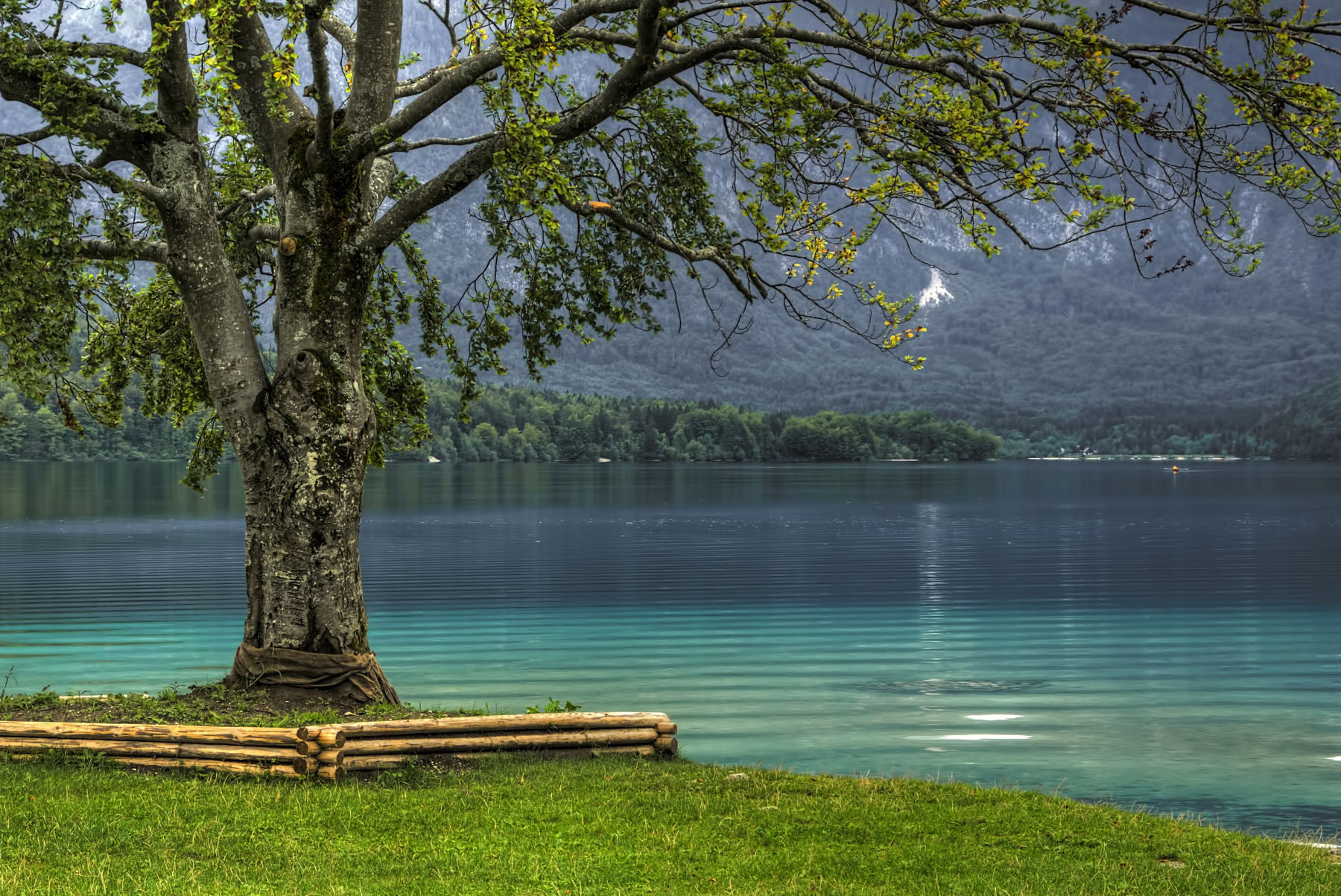
In July and August it is possible to swim in Lake Bohinj. The water in the lake is usually fresh but perfectly OK. Image by Vicente Villamón / CC BY-SA 2.0
– Celje Weather and Climate
The climate in Celje features distinct seasons, namely winter and summer. Spring and autumn are still apparent, but the weather at these times of the year merges between Celje’s more obvious seasons, remaining much more short-lived.
– Moravske Toplice Weather and Climate
Moravske Toplice is a part of northeastern Slovenia and experiences a temperate, continental climate with warm, fairly moist summers and cold, often snowy, winters. The best time to travel here, as with anywhere in Central Europe, is between May and September, when it is warmest.

The best months to visit Moravske Toplice is from May to September. Image by Yerpo / CC BY-SA 3.0
– Postojna Weather and Climate
Located in southwest Slovenia, the city of Postojna enjoys a moderate climate with warm weather in the summer months and cool winters. In summer, visitors to Postojna experience a pleasant climate and warm temperatures, and the hottest months of the year are July and August, when maximum daytime temperatures can reach around 25°C. Winter in Postojna runs from December through to March and the coldest weather occurs in January, when daytime temperatures drop below 0°C. The cold Bora winds blow during the winter months and snowfalls will occur through these months.
– Strunjan Weather and Climate
For the sun, you can visit anytime between May and September to experience nice weather. Strunjan enjoys one of the sunniest climes on the Adriatic with more than 2300 hours of sun a year, although has its fair share of rainfall, too – mainly in autumn. The winter weather and climate in Strunjan is quite mild compared to other parts of Slovenia. As a result, frost and snow are experienced only infrequently.
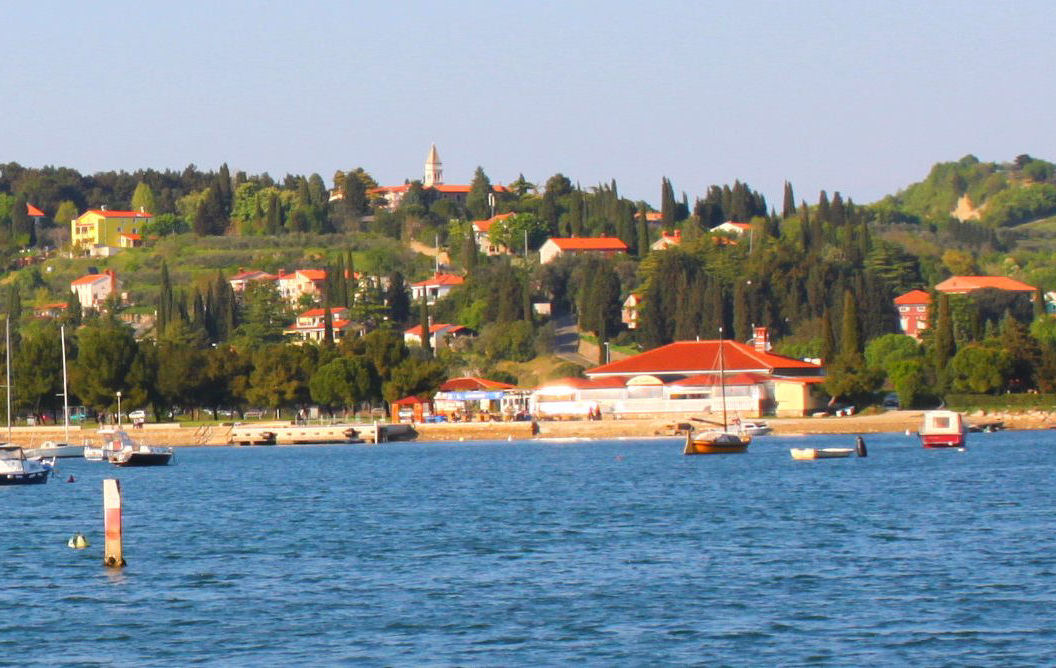
Located on the Adriatic Coast of Slovenia, Strunjan enjoys Mediterranean-style weather in the summer, with plenty of sunshine and high temperatures. Image by Benreis / CC BY-SA 3.0
– Nova Gorica Weather and Climate
Whilst temperatures may vary from year to year, Nova Gorica tends to enjoy a pleasant climate all year round. The spring and autumn are generally the best seasons to visit Nova Gorica. During the summer climate, Nova Gorica basks in fairly high temperatures, although the hot, sunny weather can be often punctuated by the thunderstorm.
– Bovec Weather and Climate
Located in the north-west of Slovenia, the climate in Bovec is definitely more continental than Mediterranean in nature. The winter months bring cold, although not harsh, weather to Bovec and summer visitors can look forward to fairly high, warm temperatures. Whatever the time of year, though, visitors to Bovec should come prepared for showers. This is particularly the case in the autumn, when the climate can be particularly changeable.
– Kobarid Weather and Climate
Located in the north-west of Slovenia, the climate the climate of Kobarid is described as temperate, with each season being quite individual and easy to recognise. The winter months bring cold, although not really harsh, weather to Kobarid and summer travelers can look forward to fairly high, warm temperatures.
– Kranj Weather and Climate
With a temperate climate where each month merges into the next, Kranj is a pleasant city to visit, regardless of the time of year. However, typically Slovenian in character, the weather in Kranj can be rather changeable at times, when any day can be rainy or sunny, warm or cold, gusty or calm – or any combination of all of these conditions.
– Radovljica Weather and Climate
The summer climate is always the most popular time to visit Radovljica, and even the evening temperatures are favourable, enticing people to sit on the terraces, outside of central bars and restaurants. Autumns in Radovljica are fairly long, since the summers can be short. When the winter climate arrives, heavy overnight frosts add a noticeable crispness to the air, followed soon by spells of snowy weather. Spring is usually quite early and by the end of April, flowers are blooming and the trees quickly burst back into life, with daytime temperatures staying above 10°C.
– Lasko Weather and Climate
Offering a moderate climate with no real temperature extremes, the weather in Lasko combines elements from both eastern and western Europe. The summer climate in Lasko is warm, agreeable and at times even a little hot, while the winter weather gradually arrives at the end of November and by January and February, the temperatures are feeling a touch crisp, both by day and night.
– Moravske Toplice Weather and Climate
Moravske Toplice is a part of northeastern Slovenia and experiences a temperate, continental climate with warm, fairly moist summers and cold, often snowy, winters. The best time to travel here, as with anywhere in Central Europe, is between May and September, when it is warmest.
– Ankaran Weather and Climate
Located on the Adriatic Coast of Slovenia, Ankaran enjoys Mediterranean-style weather in the summer, with plenty of sunshine and high temperatures, as well as mild winters.
– Sezana Weather and Climate
Sezana has the typical spring, summer, autumn, and winter climate variations. It’s pretty hot in the summer, near freezing in the winter and pleasant in late spring and early autumn.
– Lesce Weather and Climate
Lesce enjoys nice, sunny summers when days are long and temperatures can often exceed 25°C, particularly in July and August. However the summer months are also unpredictable, and odd days can rapidly change from sunshine to rain. The winter months in Lesce, by contrast, are bitterly cold, with snow and frosty days when temperatures hover at or just below freezing.
– Upper Carniola Weather and Climate
The tourist levels in the Upper Carniola region of Slovenia are at their highest in the summer months, especially between June and August, when the weather is at its best, although summer days are known to be somewhat changeable and rather unpredictable. Other great months to visit Upper Carniola are May, June, September and October when the average temperatures are a little cooler but still between a pleasant 15°C and 20°C. Autumns in Upper Carniola are fairly long, since the summers can be short. By December, the winter climate has definitely arrived and the season for winter sports begins, with soft, powdery snow and a surprising amount of sunshine across the Alpine skiing resorts.
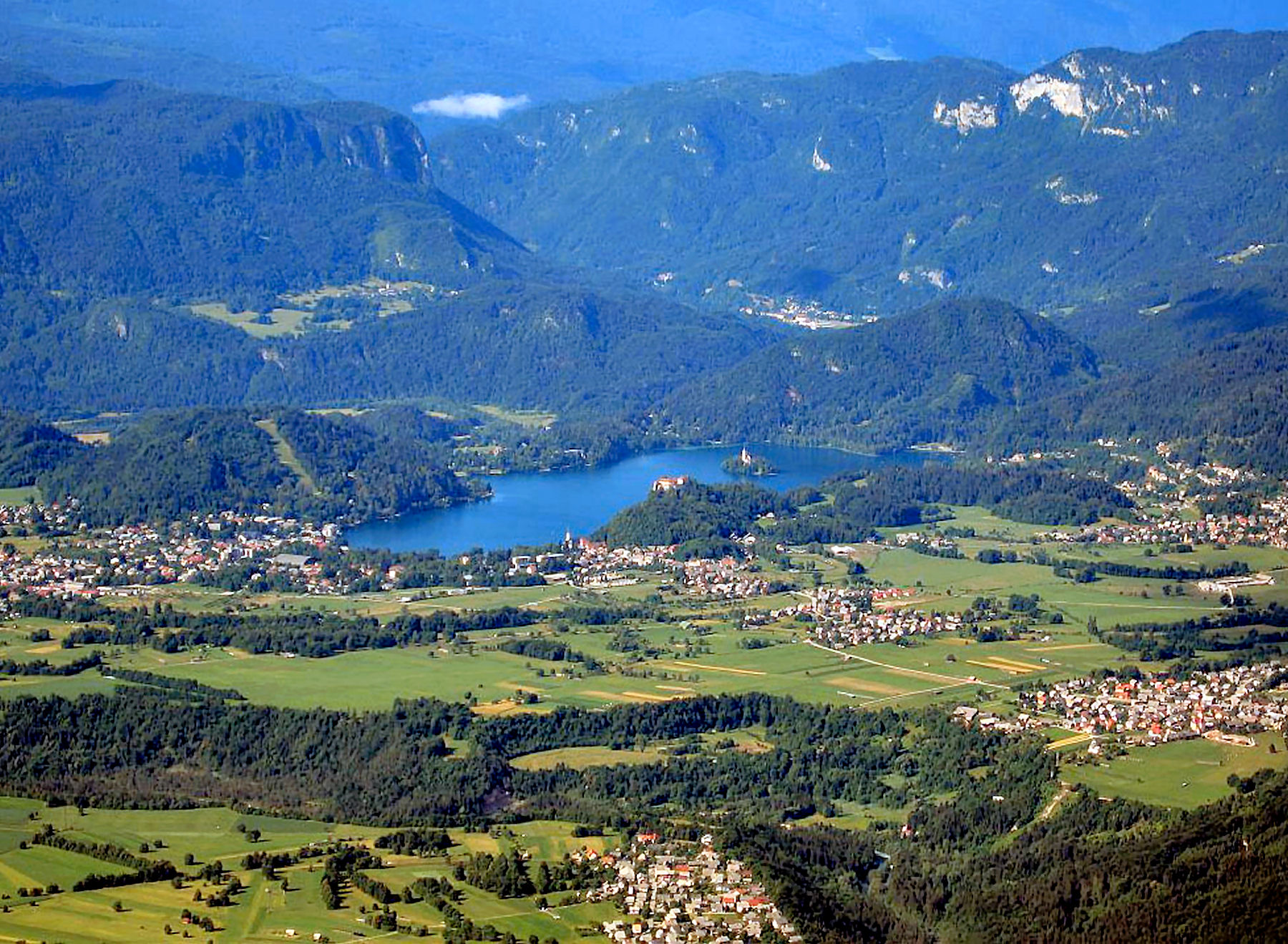
Upper Carniola enjoys pleasant, sunny summers when days are long and temperatures can often exceed 25°C, particularly in July and August. Image by Matijap
– Slovenian Alps Weather and Climate
Gorenjska, or the Slovenian Alps as it is most commonly called in English, has the moderate Alpine climate with very distinctive seasons, which change quickly and noticeably. Although the climate in the Slovenian Alps can be a little chilly at times, the summer months are quite warm. From mid-June to August, the fine summer weather in Slovenian Alps results in daytime averages of between 20°C and 25°C, although with a little strong sunshine, temperatures can often rise higher.

The summer climate is a popular time to visit Slovenian Alps. Image by MihaV / CC BY 2.0
– Gorenjska Weather and Climate
Gorenjska is determined by the Alpine climate. It enjoys pleasant, sunny summers when days are long and temperatures can often exceed 25°C, particularly in July and August. However the summer months are also unpredictable, and the weather can change from sunshine to cloud and rain in a matter of minutes. Winter weather in Gorenjska, by contrast, is bitterly cold, with snow and frosty days when temperatures hover at or just below freezing.

The summer and early-autumn climate is always the most popular time to visit the Gorenjska region of Slovenia. Image by Pinky sl / CC BY-SA 3.0
– Slovenian Istria Weather and Climate
Slovenian Istria enjoys a climate that is quite different from other parts of Slovenia. Here, visitors can expect Mediterranean-style weather in the summer, with plenty of sunshine and high temperatures, as well as mild winters. Slovenian Istria does experience a fair amount of rainfall throughout the year, so both summer and winter visitors should come prepared with appropriate wet weather gear.

Summers in Slovenian Istria are pretty hot and mostly sunny, with average daytime temperatures between 22°C and 30°C. Image by Nicolas Vollmer / CC BY 2.0
| |
|---|
| The accommodation options in Slovenia can be divided into six main types: hotels, guest houses, B&Bs, self catering apartments, hostels and farm stays. |
 Finding a hotel that suits your needs and fits your budget can be a hassle. Slovenia is a small country but it has more than 250 hotels ranging from super luxurious to boutique style hotels to a nice choice of affordable 3-star hotels. Find out which hotels in Slovenia we recommend and why. |
 Slovenia guest houses are definitely a nice, safe option for a place to stay as they are comfortable and homely with owners who take an interest in their guests. Many guesthouses have a good on-site restaurant and offer not only delicious breakfasts, but also a wide range of meals for lunch and dinner. There are more than 400 guest houses all across the country, so read on and find out which one would best suit your needs, style and budget. |
 Slovenia bed and breakfasts are family-run places that range from small homes renting out two or three spare bedrooms to large guest houses with more than a dozen rooms. In essence you get a room and usually also a private bathroom in someone's house, with breakfast included in the price. Find out which B&Bs in Slovenia we recommend and why. |
 Many local residents in Slovenia offer apartments for rent in their houses. Each apartment has one or two bedrooms, a bathroom and a kitchen. Some also have a living room and a balcony or a terrace. It's a very popular budget-friendly option when you are staying in Slovenia, but choose carefully, the price and quality vary considerably. Here you will find apartments that we think are the best ones in the country right now. |
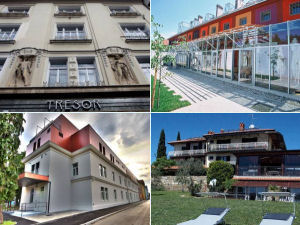 Hostels are a very popular option for those seeking wallet-friendly accommodations in Slovenia. Most spaces and amenities are usually shared, but even if you’re not up for the cheapest option - a bed in a dorm room - you can often get a basic private room at a hostel for significantly less than the cost of a low-end hotel or privately rented room. Competition between hostels has grown over the past 10 years so the quality has risen considerably and there are now some really great hostels in Slovenia. Find out which are the ones that we recommend and why! |
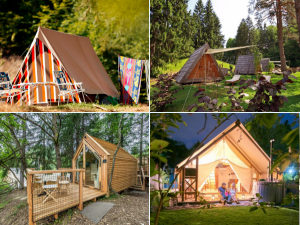 The beautiful nature in Slovenia is a perfect setting for camping or glamping. Around the country, sites offer great accommodation with all the modern amenities a guest needs to be comfortable. Next time you visit Slovenia, instead of a hotel or guesthouse, stay at one of the wonderful camping and glamping sites. |
 Farm stays are an increasingly popular vacation option, especially for families with young children. Styled after traditional B&Bs, farm stays offer comfortable lodging, low rates, generous breakfasts and direct access to farm animals, fresh fruit, vegetables and eggs. On some farms you can also join in with farm tasks, including feeding and egg collecting. Find out which farm stays in Slovenia we recommend the most. |
